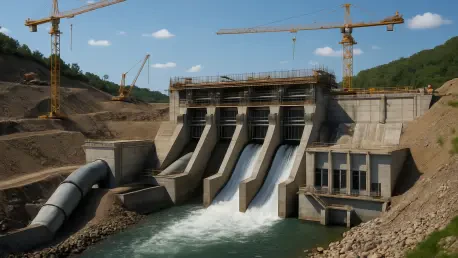In a significant stride toward sustainable energy, a new hydroelectric project has received the green light at Dare Valley Country Park in Cynon Valley, Rhondda Cynon Taf, Wales, marking a promising step for renewable energy integration in public spaces. This initiative, recently endorsed by the local council’s planning committee, aims to power the park’s visitor center and hotel with clean, renewable electricity harnessed from a nearby watercourse. The approval highlights a growing commitment to environmental goals across the region, showcasing how small-scale projects can contribute to larger sustainability targets. As communities increasingly seek innovative ways to reduce carbon footprints, this development serves as a beacon of what’s possible when nature and technology converge. It’s a subtle yet impactful move, blending ecological responsibility with practical energy solutions, and it sets the stage for exploring how such schemes can transform local landscapes without disrupting their charm or functionality.
Harnessing Nature for Renewable Power
The approved project involves the installation of a 50kW micro-hydroelectric system strategically positioned west of the park’s visitor center, making use of an existing watercourse to generate electricity. Key elements of the setup include replacing an outdated weir, constructing an underground control chamber, and building a powerhouse to accommodate essential components like water pipes, turbines, and electrical equipment. A penstock pipe will direct water from the weir to the powerhouse, while a cable will transmit the generated power directly to the visitor center. Additionally, the plan encompasses minor excavation, securing infrastructure, and managing woodland areas to enhance ecological benefits. Existing paths will also be reinstated to ensure minimal disruption to park visitors. This thoughtful design prioritizes both functionality and environmental harmony, aiming to deliver sustainable energy without altering the natural allure that draws people to the park.
Beyond the technical aspects, the project reflects a meticulous approach to integrating renewable energy into a cherished public space without compromising its aesthetic or recreational value. The majority of the work will occur underground or within the watercourse, ensuring that the visual impact remains negligible. Even the powerhouse, situated near residential properties by the lower lake, has been designed to blend seamlessly into the surroundings, avoiding any intrusion on privacy or comfort for nearby residents. A detailed noise impact assessment further reassures that the system will operate without generating disruptive sound levels, maintaining the tranquil atmosphere of the area. This balance between innovation and consideration underscores the potential for renewable projects to coexist with community needs, offering a model for how similar initiatives might be implemented in other natural settings across the region with equal care and precision.
Aligning with Broader Environmental Goals
This micro-hydroelectric scheme aligns seamlessly with ambitious targets set by the Welsh Government to source 70% of the region’s electricity from renewables by the end of this decade. It stands as a practical example of how localized efforts can contribute to overarching environmental objectives, demonstrating that even modest projects can play a vital role in the transition to sustainable energy. Planning officers have emphasized the scheme’s minimal scale and its careful design to avoid any significant impact on the park’s landscape or functionality. The absence of public objections to the proposal further suggests a level of community trust in the council’s evaluation, or at least a recognition that the benefits of clean energy outweigh any minor inconveniences. This acceptance could pave the way for broader support of renewable initiatives, fostering a culture of sustainability at the grassroots level.
Moreover, the initiative at Dare Valley Country Park illustrates the power of combining ecological responsibility with practical energy needs in a way that respects both nature and local stakeholders. The project not only addresses the immediate energy demands of the park’s facilities but also serves as a symbol of progress in the fight against climate change. By embedding renewable solutions into everyday spaces, it encourages other communities to explore similar opportunities, potentially sparking a ripple effect across Wales and beyond. The careful planning and execution of this scheme highlight a forward-thinking approach, ensuring that environmental goals are met without sacrificing the qualities that make public spaces like this park so valued. This development could inspire future projects to adopt a similarly balanced perspective, proving that sustainability and community well-being can indeed go hand in hand.
Reflecting on a Sustainable Milestone
Looking back, the approval of this hydroelectric project at Dare Valley Country Park marked a quiet yet meaningful victory for renewable energy adoption in Wales. It demonstrated how small-scale solutions could effectively support larger environmental ambitions while preserving the integrity of beloved public spaces. The seamless integration of the system, coupled with the lack of community pushback, reflected a shared understanding of the importance of sustainable progress. As a next step, local authorities and planners might consider replicating such initiatives in other parks and public areas, using this project as a blueprint for minimal-impact energy solutions. Additionally, engaging communities early in future proposals could further solidify public support, ensuring that the momentum for renewable energy continues to grow. This milestone offered a glimpse into a future where clean energy and natural beauty coexist, encouraging ongoing innovation in the pursuit of a greener tomorrow.









